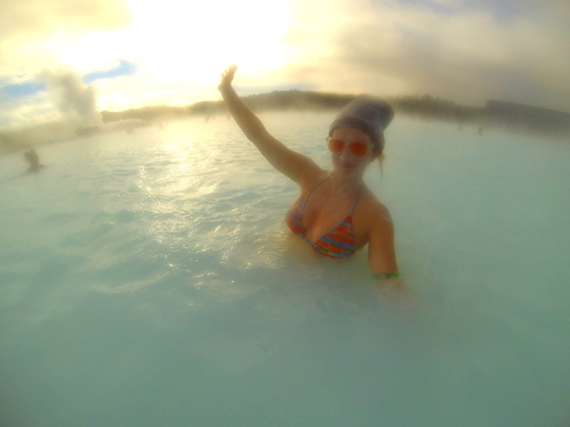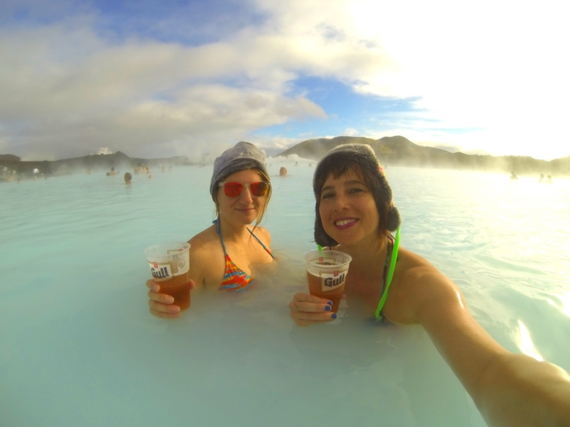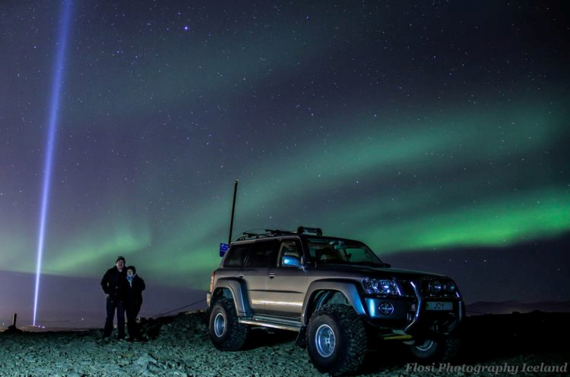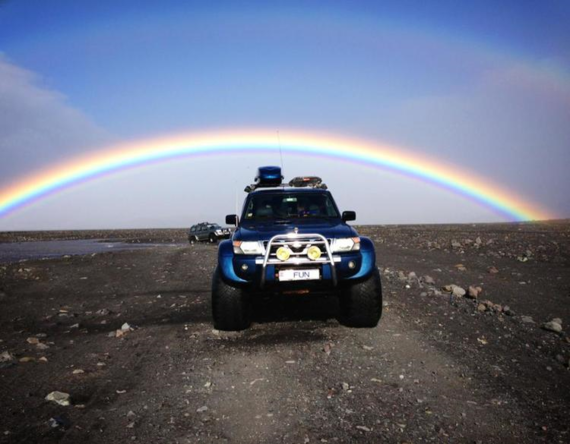In John McPhee's sharp and heedful book, The Control of Nature, he chronicles attempts by Man to wrestle down disruptive Nature. In one account he describes the eruption of Eldfell ("Mountain of Fire") on the Icelandic island of Heimaey. Hot ash and tephra destroyed some 400 homes, and one man who broke into a chemist's store to steal drugs suffocated by toxic fumes.
But the real peril was a large lava tongue pushing into the harbor, threatening to block off the fishing fleet, the main income source for the island. As the molten rock advanced, things looked hopeless, until someone had a moment that might have come from the movie "The Blob." By pumping massive amounts of cold sea water onto the marching lava, they arrested the flow, and saved the harbor.
I had a volcano period, stepping hotly around the world unwisely climbing the trembling cones. I found myself shipwrecked on Anuk Krakatoa; lost in the boiling fog of Merapi; combing through debris on Pinatubo, swimming the inner crater of Taal; summiting Rainier, Adams and Kilimanjaro, but not Cotopaxi; burning boots on Soufrière Hills, and generally being indefensibly lucky.
So, of course, I had to go see Eldfell.
I flew to Reykjavík, northernmost capital in Europe, and spent a day sampling the city and environs, making the compulsory soak in the Blue Lagoon, and visiting The Volcano House, which offers up a selection of documentaries of pyrotechnic explosions. I connected to Heimaey the next day, and wandered among the buried buildings and houses, strode by millions of puffins, hiked around the shape-shifted harbor, and climbed the steep cinder cone of Eldfell, still warm to the touch. But the warmth that stayed with me was from the Icelanders, with whom I drank at the pubs, and ate at the cafes, who shared their stories and sagas, and who obviously loved their land. "To the outsider, our home may seem barren, bleak. But there is so much to see and do here," the cab driver told me enroute to the airport.
So, when recently my friend Skye Mayring (aka Joan Jetsetter, her nom de nomade) told me she was off to Iceland, I prodded. "Can you shoot some video?" It would be the next best thing, until I could make my triumphal return.
Skye came home with a mini-series worth of videos, and this report:
"Surrounded by moon-like lava fields, the Blue Lagoon is perhaps Iceland's most perfect mistake. Its geothermal pools, which were accidental byproducts of a nearby power plant, now attract some 2,000 guests a day. People see the Blue Lagoon as a fountain of youth and slather white silica mud all over their faces. As George Burns once said, 'you can't help getting older, but you don't have to get old.'"
"According to a recent University of Iceland study, 54 percent of Icelanders believe in elves. Hidden folk, trolls, elves and fairies, are the subjects of lectures and plenty of debate at Reykjavik's Elf School.
For about $50 bucks tourists and locals alike can take a half-day class with the Elf School's headmaster. He teaches Iceland's supernatural history and recounts many stories of real-life encounters with elves.
Down the road, Raghildur Jonnstochter, the Elf Whisperer will take visitors on a tour of the Elf Garden to see the tiny homes occupied by dwarves and fairies, and even their place of worship, the Elf Church."
"One of the most exhilarating experiences in Iceland is riding like the brisk wind on a Viking Horse. I met up with Viggo Sigurdsson, co-owner of Viking Horses. Viggo has been riding since he was five, and launched his horse riding company on the outskirts of Reykjavik less than a year ago.
The traditional style of riding is all about comfort, as Vikings had to endure long rides in harsh conditions over tough terrain. Icelandic horses respond best to confident riders who ride with heels down, weight back and with a short grip on the reigns.
It's a surreal experience, like riding on the maria of the moon. As I strode along there was not another soul in sight, just miles of rugged, barren, lunar landscape in every direction. This was unbridled freedom.
Viggo demonstrated the famous Fifth Gait, the Flying Pace, considered the crown of horsemanship for Icelanders. With this gait, the horse's legs on each side move in unison, creating a distinctive moment of suspension...and it really felt like flying.
Some say that perfection can be cultivated over time. The Icelandic horse, untouched by outside influence and bred for its most desirable qualities, is 1,000 years in the making."
"The non-bio-alternative to the Viking Horse is the Super Jeep.
What is a super jeep? It's a heavily modified vehicle that can go places a normal 4x4 can't. Driving on snow, sand or even a glacier is a snap thanks to its huge 44-inch tires and an air compressor that dramatically reduces tire pressure.
Discover Iceland specializes in adventure tours packed with secret spots...the ones only locals know about, such as where the rainbows end.
Why is this still a thing? One obligatory stop is the Thingviller National Park, a UNESCO World Heritage Site, at the mid-Atlantic ridge, where two tectonic plates converge. We literally step from North America to Europe...no passport required.
But the best part of the journey happens off the beaten track. We roll to the longest glacier in Europe, Longyokull, about 60 kilometers long and 700 meters thick. But, like glaciers around the world, it is slowly melting away, and has perhaps only 80 years left...so, good to go see it now.
Under the glacier, there are two active volcanic systems, and not far away, Bardarbunga volcano spews lava to heights of 165 feet. But locals aren't worried.
Despite frequent earthquakes, extreme weather and immanent eruptions, Icelanders are among the happiest and longest-living people in the world. Maybe there's something in the water...or the fresh air....or perhaps they just know how to have a good time."
"Think back to the time when the word "Iceland" first resonated. Perhaps it was in history class, learning about the Viking appetite for treasure and women. Or maybe it was seeing an image of the Blue Lagoon, otherworldly, eerie and inviting all at once. For me and countless other kids in the 90s, "Iceland" became a destination when Bjork's music hit the airwaves. And with breakout bands like Sigur Ross and Of Monsters and Men blowing up the scene, the world is looking to Iceland again to deliver next big thing.
I sat down with Indie electro trio, Vok, at a cheesy Viking restaurant in their hometown Hafnarfjorthur (say that three times fast). It turns out that the band formed two weeks prior to a battle of the bands competition. They entered and won first place. Not bad for their first public performance.
Their début album, Tension, has over 400,000 plays on Soundcloud to date. But fans are rabid for more music.
To celebrate the news of their forthcoming LP, I offer to buy a round of Iceland's notorious liquor, Brennavin, known as "The Black Death." Most members turn me down.
For emerging rock stars, still new to their 20s, Vok is unusually well behaved. It is however, a school night, and for now, they still have day jobs to go to."
As the Icelandic proverb goes, "The generous and bold have the best lives."



